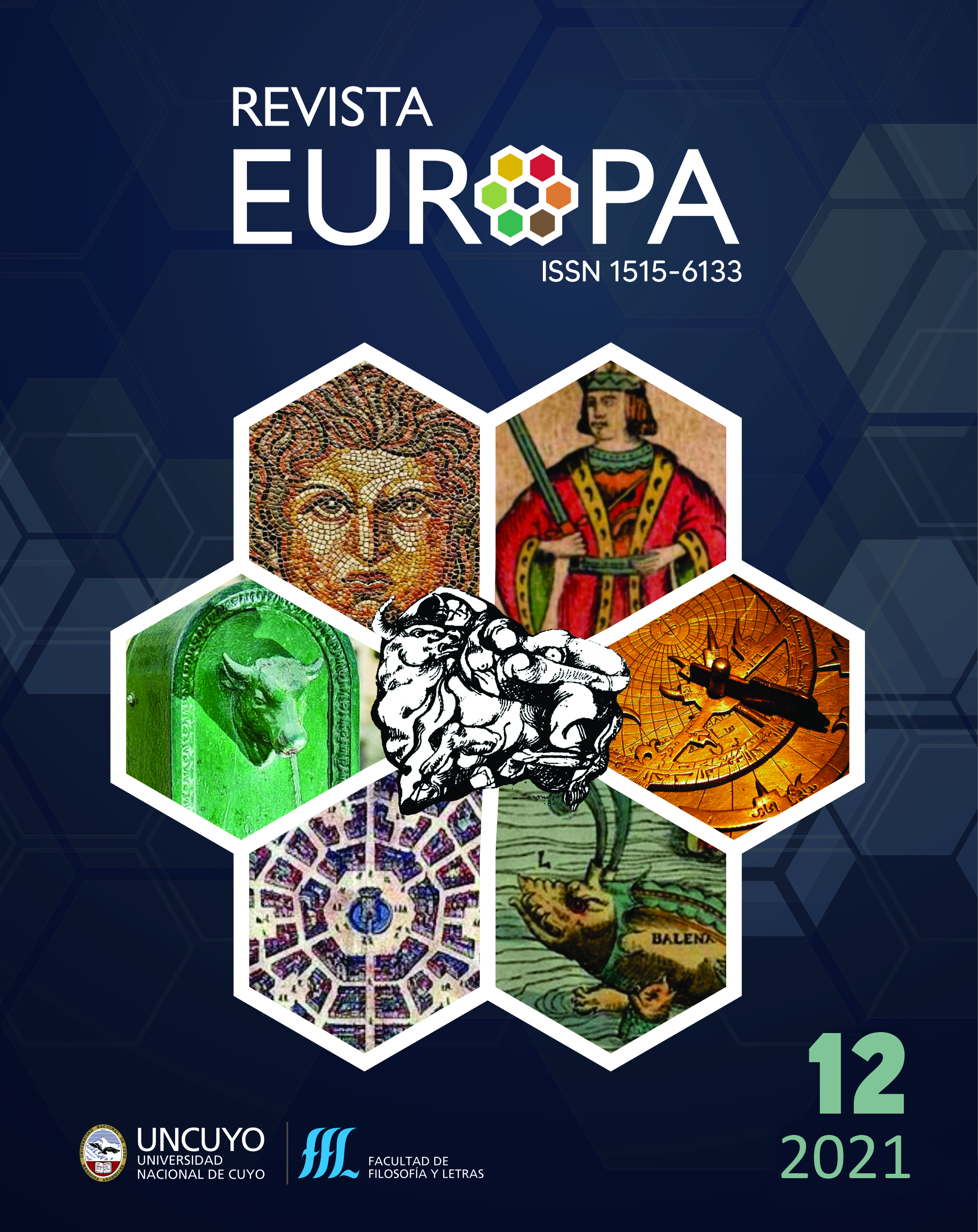A socio-critical approach to the rural-urban dichotomy in Peace by Aristophanes
Keywords:
rural, urban, Aristophanes, Social criticismAbstract
In this article, we examine Aristophanes’ comedy Peace, written in the 5th century BC, in an attempt to explore the way in which the core-periphery polarization is presented as the axis around which the underlying social, cultural and economic tensions revolve. Against the background of the long and devastating Peloponnesian war, Aristophanes became keenly aware of the rural-urban dichotomy, heightened by the state of belligerence and its adverse consequences for the population. Peace is particularly revealing of the concomitant tensions and allows a glimpse of the author's position regarding both the war and the various forms of exchange between both spaces. Social criticism, the theoretical framework of the article, holds that all artistic creation is social practice and, therefore, ideological production. Drawing upon this tenet, we seek to cast light on the social values that organize the fictional text, without ignoring its aesthetic specificity. A socio-critical reading of the literary text makes it possible to relate writing and ideological production of meaning.
References
Fuentes primarias
HALL, Frederick William and GELDART, William Martin (eds.) (1906‒1907). Aristophanis Comoediae. (Vol. 1) Oxford: Clarendon Press.
ARISTÓFANES (2013). (Introducción, traducción y notas de Claudia Fernández) Paz. Buenos Aires: Losada.
Bibliografía consultada
ANGENOT, Marc (2010). El discurso social. Los límites históricos de lo pensable y lo decible. Buenos Aires: Siglo XXI.
CROS, Edmond (1986). Literatura, ideología y sociedad. Madrid: Gredos.
‒ ‒ ‒ ‒ ‒ ‒ ‒ ‒ ‒ (1997). El sujeto cultural. Sociocrítica y psicoanálisis. Buenos Aires: Corregidor.
DUCHET, Claude (1991). “Posiciones y perspectivas sociocríticas” en: Malcuzynski, Pierrette (comp.) Sociocríticas. Prácticas textuales. Cultura de fronteras. Amsterdam: Rodopi.
ESPIÑEIRA GONZALEZ, Keina (2009) El Centro y la Periferia. Una reconceptualización desde el pensamiento descolonial. Recuperado desde: https://www.cidob.org/en/content/down load/22987/266912/file/ponencia_III_training_programa_keinaEspineira.pdf
GIL FERNÁNDEZ, Luis (1996). Aristófanes. Madrid: Gredos.
OGIEN, A. (2018) “Una concepción ampliada de periferia” en Revista Periferias N° 2. Recuperado desde: https://revistaperiferias.org/es/ed/democracia-y-periferia/
PLÁCIDO, Domingo (1997) La sociedad ateniense. La evolución social en Atenas durante la guerra del Peloponeso, Barcelona, Crítica.
ROBIN, Régine y ANGENOT, Marc (1991). “La inscripción del discurso social en el texto literario” en Malcuzynski, Pierrette (comp.) Sociocríticas. Prácticas textuales. Cultura de fronteras. Amsterdam: Rodopi
SHERE, JIMENA (2018) El par cómico. Un estudio sobre la persuasión cómica en la comedia temprana de Aristófanes. Buenos Aires: Santiago Arcos.
UBERSFELD, Anne (1998). Semiótica Teatral. Madrid: Cátedra.
‒ ‒ ‒ ‒ ‒ ‒ ‒ ‒ (2004). El diálogo teatral. Buenos Aires: Galerna.
ZIMMERMANN, Bernhard y RÖSLER, Wolfgang (1991). Carnevale e utopia nella Grecia antica. Bari: Levante.
Downloads
Published
Issue
Section
License
Quienes envíen trabajos a la Revista EUROPA, que edita la Asociación de Estudios Interdisciplinarios sobre Europa (ADEISE) de la Facultad de Filosofía y Letras de la Universidad Nacional de Cuyo (Mendoza, Argentina), otorgan automáticamente licencia no exclusiva y sin límite temporal de su manuscrito a dicha publicación. En consecuencia, como la distribución de la citada Revista no tiene finalidad lucrativa sino académica, el autor (los autores) autoriza(n) a la misma la difusión gratuita en formato impreso y medios electrónicos, tanto en red local como por vía internet.
Se establece que:
- Los/as autores/as conservarán sus derechos de autor y garantizarán a la revista el derecho de primera publicación de su obra.
- Los/as autores/as deben adherir a la la Licencia Creative Commons Atribución-NoComercial-CompartirIgual 4.0 Internacional, mediante la cual el autor permite copiar, reproducir, distribuir, comunicar públicamente la obra sin propósitos comerciales, por cualquier medio o formato. También, se pueden generar nuevas obras derivadas, siempre y cuando se cite y reconozca al autor original y su primera publicación en esta revista.
- Los/as autores/as podrán adoptar otros acuerdos de licencia no exclusiva de distribución de la versión de la obra publicada (p. ej.: depositarla en un archivo telemático institucional o publicarla en un volumen monográfico) siempre que se indique la publicación inicial en esta revista.
- Se permite y recomienda a los/as autores/as difundir su obra a través de Internet (p. ej.: en archivos telemáticos institucionales o en su página web) luego de su publicación, lo cual puede producir intercambios interesantes y aumentar las citas de la obra publicada. (Véase El efecto del acceso abierto).




